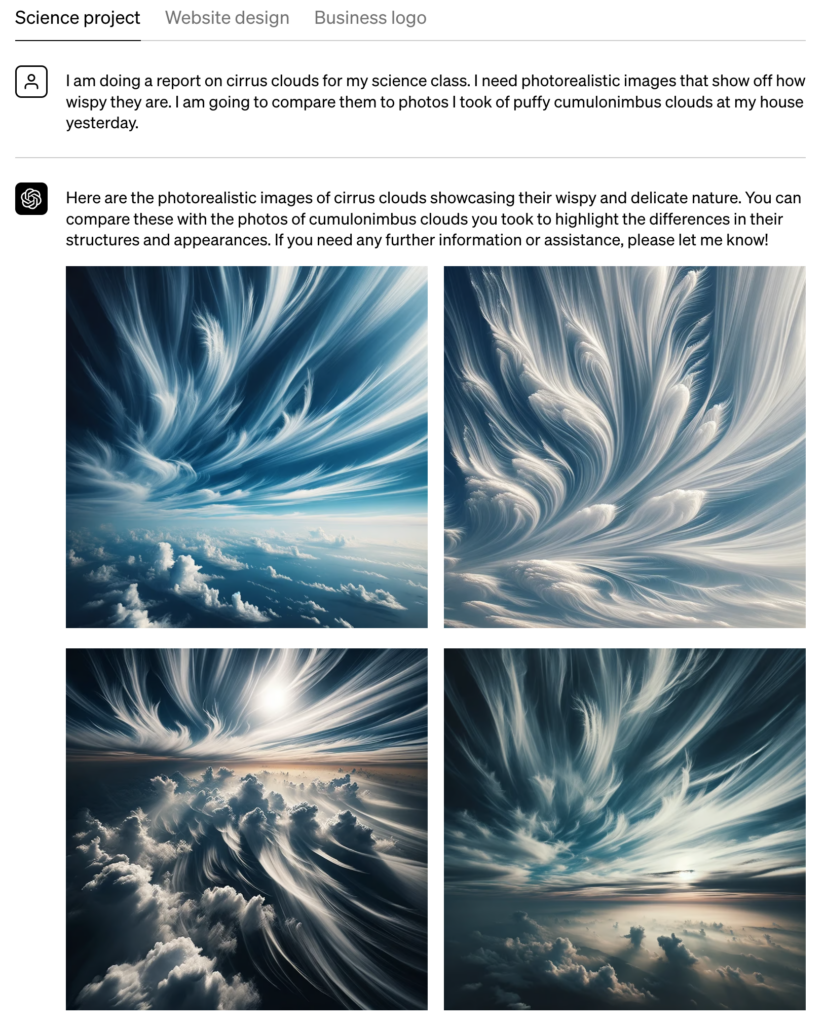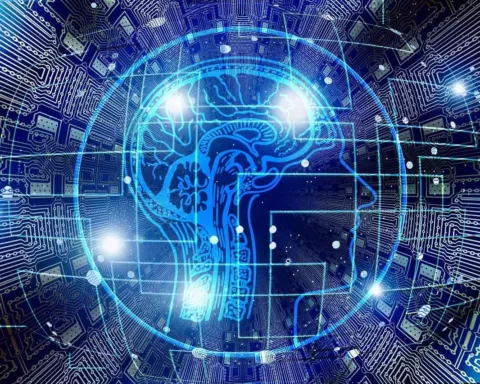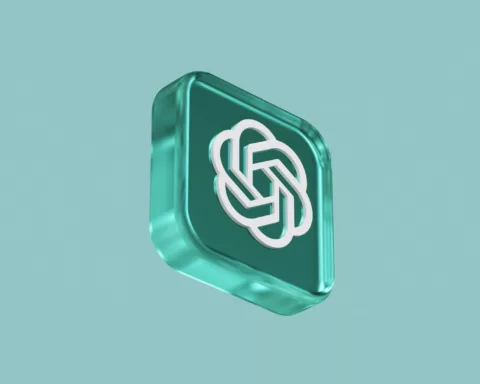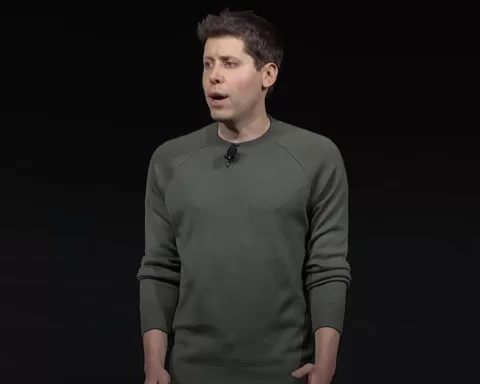OpenAI has announced the integration of its advanced image-generating model, DALL·E 3, into ChatGPT Plus and Enterprise. This move aims to offer users a more interactive and visually engaging experience by generating high-quality images based on textual prompts. The integration is designed to benefit a wide range of applications, from content creation to business presentations.
The company has implemented a multi-layered safety system to restrict DALL·E 3 from producing potentially harmful content, such as violent or adult imagery. This safety system scrutinizes both the user prompts and the generated images before they are shown to users. OpenAI has also collaborated with early users and expert evaluators to identify and rectify any shortcomings in its safety mechanisms. This process has helped the company to recognize edge cases where the model might generate inappropriate content, like sexually explicit images, and to fine-tune its ability to produce misleading visuals.
According to OpenAI’s blog post, in preparation for the wide deployment of DALL·E 3, OpenAI has taken measures to reduce the likelihood of the model generating content that mimics the style of living artists or portrays public figures. The company has also worked on improving the demographic representation in the images generated by the model. For more details on the preparations for DALL·E 3’s deployment, OpenAI refers users to the DALL·E 3 system card.

OpenAI emphasizes the importance of user feedback for continuous improvement. Users of ChatGPT can report any unsafe or inaccurate outputs by using a flag icon, which will inform the company’s research team. OpenAI believes that listening to a broad and diverse user base is crucial for responsible AI development and deployment.
The company is also in the early stages of evaluating a new internal tool known as a “provenance classifier.” This tool is designed to identify whether an image has been generated by DALL·E 3. Preliminary internal tests show that the classifier is over 99% accurate in identifying unmodified images generated by DALL·E 3, and retains over 95% accuracy even when the image has undergone common modifications like cropping or resizing. While the classifier is promising, it is not yet definitive in its conclusions. OpenAI expects this tool to be part of a broader set of techniques aimed at helping people understand if audio or visual content is AI-generated.
OpenAI anticipates that the provenance classifier will be a valuable asset in the ongoing challenge of determining the origins of AI-generated content. This is a challenge that the company believes will require collaboration across various stakeholders in the AI industry.
Featured Image via Unsplash





cialis interactions
cialis interactions
what happens if a woman takes cialis
what happens if a woman takes cialis
order cialis at online pharmacy
order cialis at online pharmacy
price of sildenafil tablets
price of sildenafil tablets
buy cheap viagra online australia
buy cheap viagra online australia
buy viagra without a prescription
buy viagra without a prescription
viagra soft canada
viagra soft canada
buying viagra from canada
buying viagra from canada
sildenafil 100mg tablets buy online
sildenafil 100mg tablets buy online
cialis from india online pharmacy
cialis from india online pharmacy
buy cipla tadalafil
buy cipla tadalafil
cialis reviews
cialis reviews
cialis no rx
cialis no rx
gabapentin klonopin
gabapentin klonopin
metronidazole gentamicin
metronidazole gentamicin
bactrim ethanol
bactrim ethanol
how to avoid weight gain on pregabalin
how to avoid weight gain on pregabalin
tamoxifen gebärmutterentfernung
tamoxifen gebärmutterentfernung
valtrex menstruation
valtrex menstruation
lisinopril+missed+dose+side effects
lisinopril+missed+dose+side effects
lasix bradycardia
lasix bradycardia
metformin hyperinsulinismus
metformin hyperinsulinismus
rybelsus type 1 diabetes
rybelsus type 1 diabetes
rybelsus for prediabetes
rybelsus for prediabetes
jessica simpson semaglutide
jessica simpson semaglutide
will escitalopram show on a drug test
will escitalopram show on a drug test
can cephalexin treat std
can cephalexin treat std
duloxetine for opiate withdrawal
duloxetine for opiate withdrawal
zoloft cost
zoloft cost
metronidazole vre
metronidazole vre
lexapro and anxiety
lexapro and anxiety
cymbalta and wellbutrin combo
cymbalta and wellbutrin combo
how long does fluoxetine take to work for anxiety
how long does fluoxetine take to work for anxiety
cheap viagra wholesale
cheap viagra wholesale
hydrocodone gabapentin
hydrocodone gabapentin
amoxicillin-clavulanate side effects
amoxicillin-clavulanate side effects
cephalexin 500 mg and alcohol
cephalexin 500 mg and alcohol
what does ciprofloxacin hcl 500mg treat
what does ciprofloxacin hcl 500mg treat
bactrim ds dose for adults
bactrim ds dose for adults
can you buy bactrim over the counter
can you buy bactrim over the counter
cozaar side effects anxiety
cozaar side effects anxiety
difference between augmentin and amoxicillin
difference between augmentin and amoxicillin
half life of depakote
half life of depakote
ezetimibe schering plough
ezetimibe schering plough
flexeril and naproxen
flexeril and naproxen
effexor side effects sexually
effexor side effects sexually
diltiazem anal fissure
diltiazem anal fissure
contrave interactions
contrave interactions
how long does it take for citalopram to get out of your system
how long does it take for citalopram to get out of your system
flomax dosage for adults
flomax dosage for adults
buy ddavp drops
buy ddavp drops
diclofenac sodium topical
diclofenac sodium topical
amitriptyline dose for pain
amitriptyline dose for pain
can you give dogs aspirin
can you give dogs aspirin
allopurinol kidney side effects
allopurinol kidney side effects
what are the side effects of aripiprazole
what are the side effects of aripiprazole
augmentin for sinus infection
augmentin for sinus infection
how long does it take celexa to work
how long does it take celexa to work
celebrex weight loss
celebrex weight loss
buspar drug
buspar drug
gabapentin and bupropion
gabapentin and bupropion
gaia ashwagandha
gaia ashwagandha
celecoxib and sulfa allergy
celecoxib and sulfa allergy
best time of day to take abilify
best time of day to take abilify
is remeron addictive
is remeron addictive
ir spectra of repaglinide
ir spectra of repaglinide
acarbose hepatotoxicity
acarbose hepatotoxicity
how long before protonix starts working
how long before protonix starts working
semaglutide dosing chart
semaglutide dosing chart
will robaxin get you high
will robaxin get you high
amoxicillin lactose
amoxicillin lactose
is tamsulosin a diuretic
is tamsulosin a diuretic
tizanidine 2 mg tablet
tizanidine 2 mg tablet
venlafaxine package insert
venlafaxine package insert
caremark synthroid
caremark synthroid
voltaren price
voltaren price
cost of stromectol
cost of stromectol
what class of drug is spironolactone
what class of drug is spironolactone